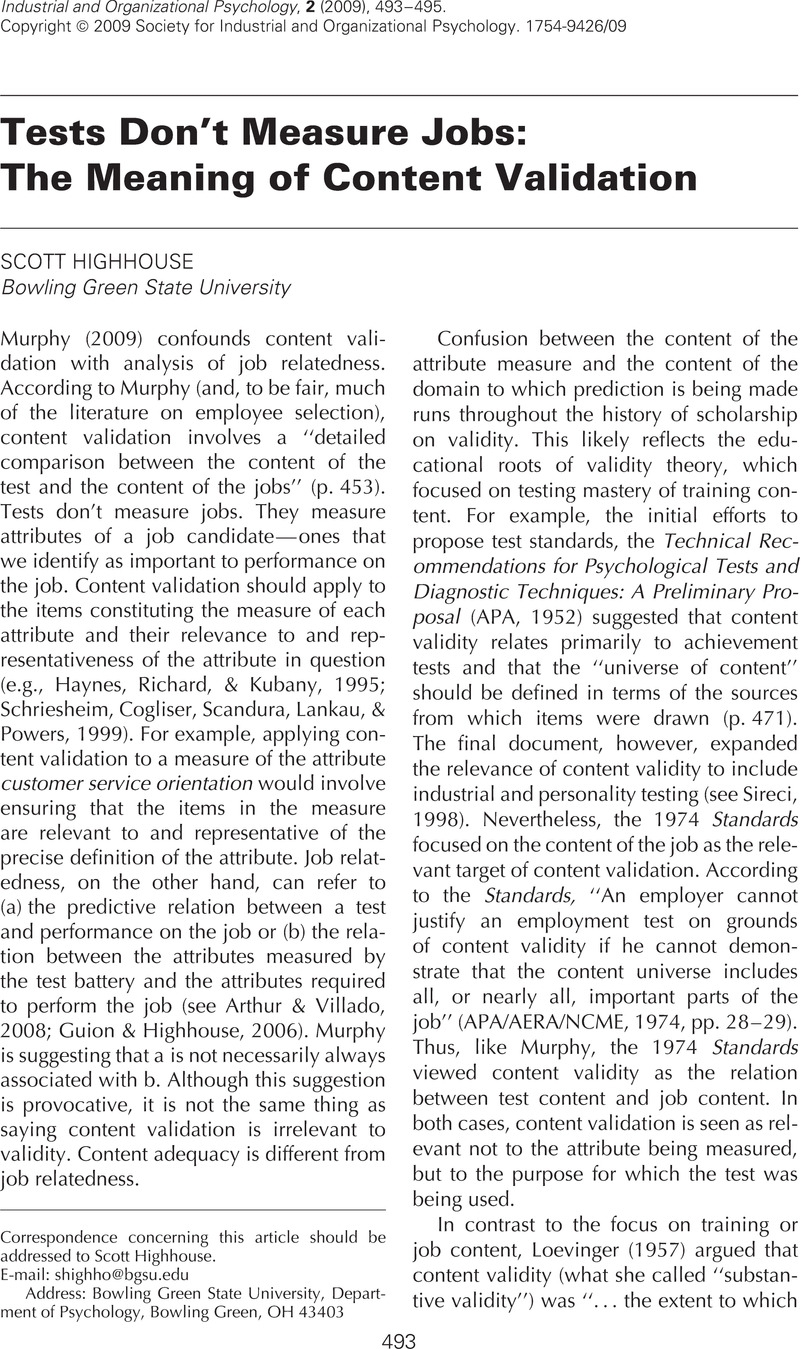Crossref Citations
This article has been cited by the following publications. This list is generated based on data provided by Crossref.
Murphy, Kevin R.
2009.
Is Content-Related Evidence Useful in Validating Selection Tests?.
Industrial and Organizational Psychology,
Vol. 2,
Issue. 4,
p.
517.
Byrne, Zinta S.
Hayes, Theodore L.
Mort McPhail, S.
Hakel, Milton D.
Cortina, José M.
and
McHenry, Jeffrey J.
2014.
Educating Industrial–Organizational Psychologists for Science and Practice: Where Do We Go From Here?.
Industrial and Organizational Psychology,
Vol. 7,
Issue. 1,
p.
2.



